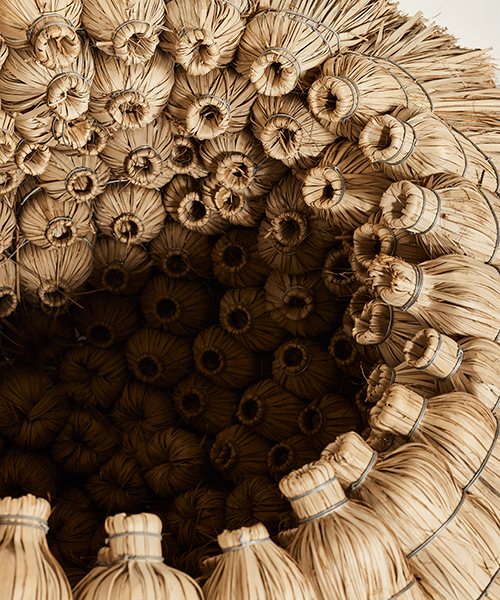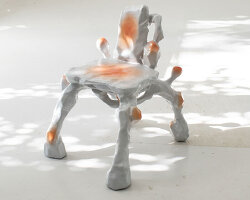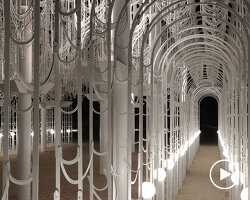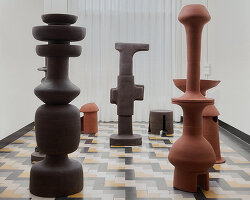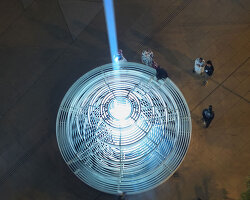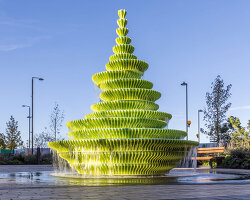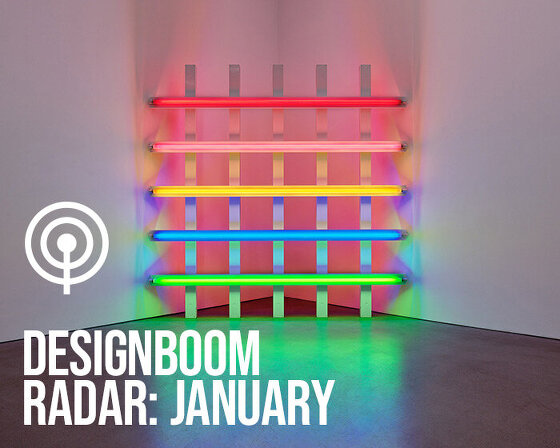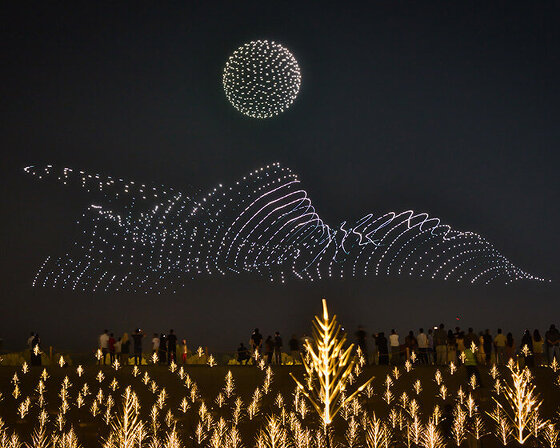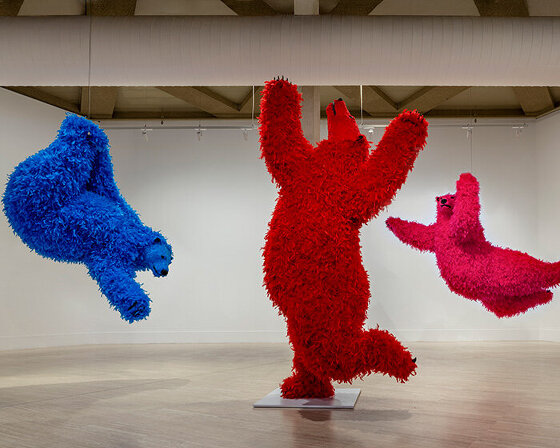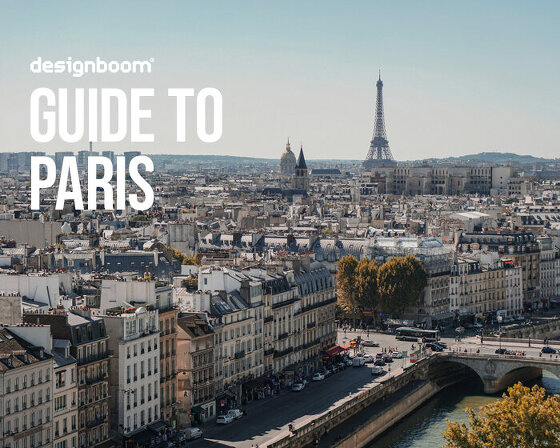‘signifying the impossible song’ to open in Los angeles
Southern Guild Los Angeles is set to open signifying the impossible song, a group exhibition curated by Lindsey Raymond and Jana Terblanche featuring works from seventeen international artists. The show brings together mixed media, sculpture, photography, and painting, with artists including Sanford Biggers, Zanele Muholi, and Bonolo Kavula contributing to a dialogue on material culture and the knowledge contained within objects. Together, the collective voices challenge traditional political systems and explore the human experience as a process of creation and recreation.
The curators emphasize the show’s focus on the cyclical rhythms of integration, disintegration, defiance, and displacement, as seen through the varied artistic practices. For example, Biggers’ work revisits historical narratives by juxtaposing cultural symbols, while Kavula’s delicate tapestries made from shweshwe cloth — a dyed and printed cotton traditional in South Africa — engage with collective histories of culture and ancestry. On view from September 13th — November 14th 2024, signifying the impossible song draws on memory, folklore, and political commentary to interrogate themes such as identity, democracy, and colonialism.
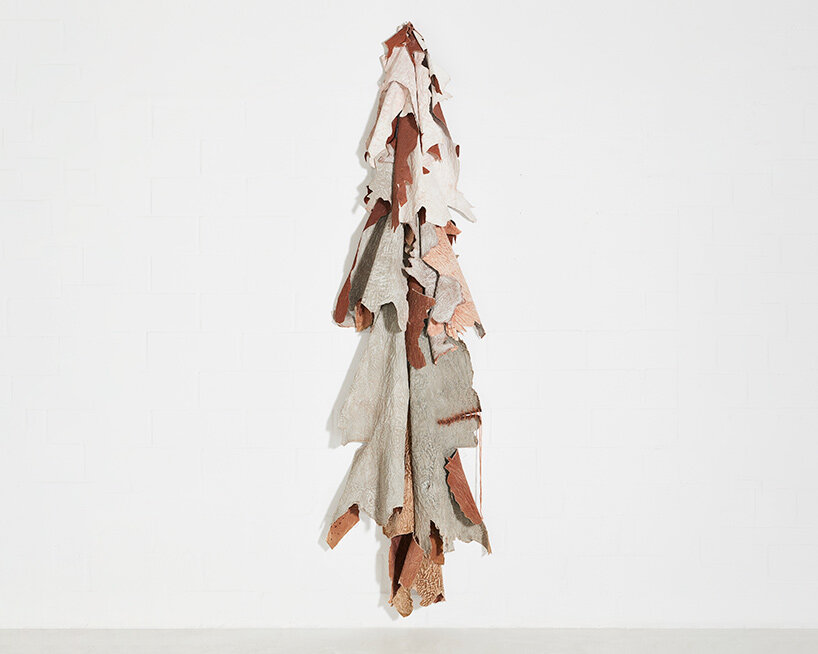
Inga Somdyala, Blood of the Lamb, 2024, image © Hayden Phipps, Southern Guild
(header) Lulama Wolf, Ukhanya Kude, 2024, image © Seth Sarlie
a dialogue with southern guild curators
In an interview with designboom, Southern Guild Los Angeles curators Lindsey Raymond and Jana Terblanche share insights into the curation process, the significance of the artists’ works, and how they hope signifying the impossible song will resonate with viewers. Their thoughtful approach highlights the relevance of materiality and symbolism in understanding the complexities of the human condition.
designboom (DB): Can you discuss the central theme of signifying the impossible song and how it ties together the diverse works and media represented in the exhibition?
Lindsey Raymond (LR): There are a number of themes at play, many of which are antithetical — which we have also embraced. The exhibition focuses on multiplicity: on social discordance, as well as community formation and unity; celebration and cynicism; and the impossibility and even the violence of conclusive, codified forms of representation. Everyday life and personal identity need to sit alongside collective and national identity. What brings these voices together collectively is how the personal and political intersect.
Jana Terblanche (JT): We were really interested in how people use materials to tell the story of who they are and signal what’s important to them. The exhibition looks to uncover how textiles aid people in expressing their personhood and nationhood — while also acknowledging the fallacies of borders and the impossibility of absolute shared experience. The ‘impossible song’ refers to the implausible task of attending to our individual concerns whilst creating a just world where resources are evenly distributed. Ultimately, the exhibition looks to the meaning materials carry through a socio-political lens and examines how artists use these to speak to the interwoven reality of human experience.
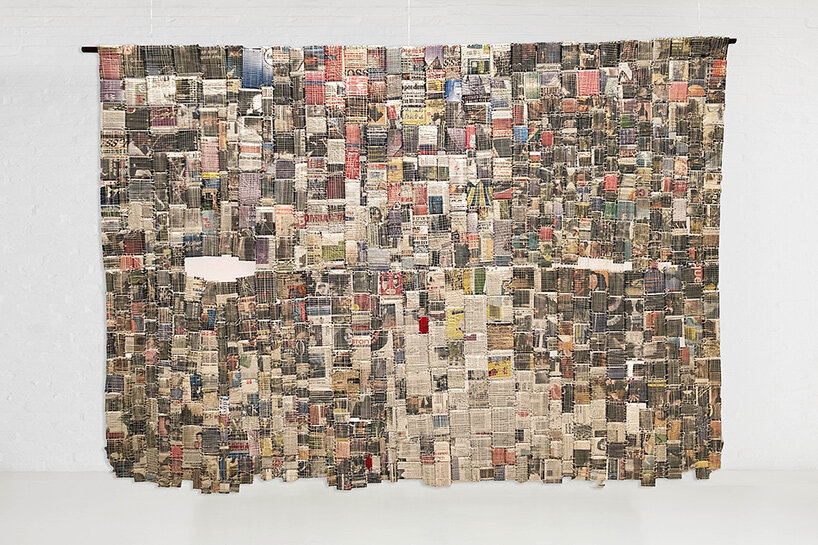
Ange Dakouo, Edifice, 2019, image © Ange Dakouo, Southern Guild
DB: What motivated the selection of the seventeen African and African American artists featured in this show, and how do their works together explore the material culture and protected knowledge you aim to highlight?
LR: Black, feminist and queer perspectives are at the center of this exhibition. Within a global election year — which accounts for half of the world’s population — this show felt absolutely essential to us. We’re also interested in a world in which we think more deeply about what’s being said and how, rather than by whom. The artists in this show have lived in Nigeria, Canada, DRC, South Africa, Iran, Germany, France, Ghana, Mali, USA, Ivory Coast, Benin and Zimbabwe — each bringing with them the histories of these locales. Their vast lived experiences allow for more meaningful cultural exchanges.
JT: It started with a conversation about bringing a few artists in dialogue, and naturally grew from there. We were looking for a plurality of voices and looked for connections between practices that seem dissonant but find a communal thread through storytelling. We were particularly looking for artists who push the boundaries of what can be done with found objects and those who explore the limits of painting. Art and culture are inextricably linked and many of the artists in this exhibition share the protected knowledges from their specific cultural backgrounds through their material choices. The much-expressed art adage ‘the medium is the message’ rings true here. These protected knowledges are visible in Zizipho Poswa’s sculptures which memoralise intricate hairstyling practices across the continent and in the use of punctured traditional South African Shweshwe cloth in Bonolo Kavula’s delicate tapestries.
Further cultural heritage is shared in the use of manipulated 19th century quilts in Sanford Biggers’ Sugar Sell the Pie which honours the history of how unique codes were embedded into quilts to illustrate safe routes for escaped slaves on the Underground Railroad in Philadelphia. Lindsey and I were really interested in how culture is the invisible thread woven between physical substrates to tell a more specific, yet, more relatable story. I am reminded of my favourite James Joyce quote, ‘In the particular is contained the universal.’
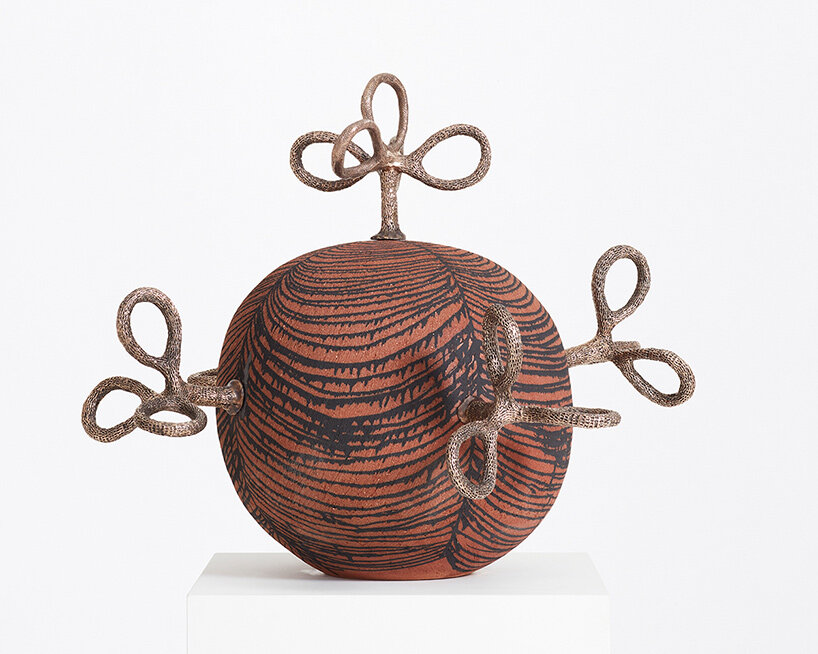
Zizipho Poswa, Fang Ndom, Cameroon, 2022, image © HaydenPhipps, Southern Guild
DB: How does the exhibition address the interplay between integration and disintegration, defiance and displacement, especially in the context of the upcoming 2024 global election year?
JT: At its core, this exhibition asks us to imagine if there exists a future where people can honor their individual histories without excluding the other. The optimist in me would like to answer a resounding ‘Yes!’. Surely, there is space for us all to be ourselves completely without stepping on others to achieve this. However, I quickly catch myself as individual choice so often comes at the expense of the whole. Herein lies the desire to integrate, but these efforts can create friction. In this important political year, I look to moments of defiance as radical acts of love by humans for each other. In Inga Somdyala’s ‘Chronicle of a Death Foretold,’ he demonstrates how the new political order is born out of defiance for the old order. In this way, we build things up and break them down in an endless cycle hoping to reach the seemingly unattainable equitable future.
DB: In what ways do the different media used by the artists — such as mixed-media, assemblage, photography, sculpture, and painting — enhance the exhibition’s exploration of historical narratives and material cultures?
JT: History is the story we tell ourselves about our past. This story is littered with discoveries, invention, human ingenuity, migration and curiosity. The different mediums employed in this exhibition point directly to these historical narratives. The reason Moffat Takadiwa uses discarded found materials is to show us how the colonial project ravaged through his people and their land. Zimbabwe’s plentiful natural resources are conspicuous in their absence. Each material choice in this exhibition reveals something about the maker and their relationship to history.
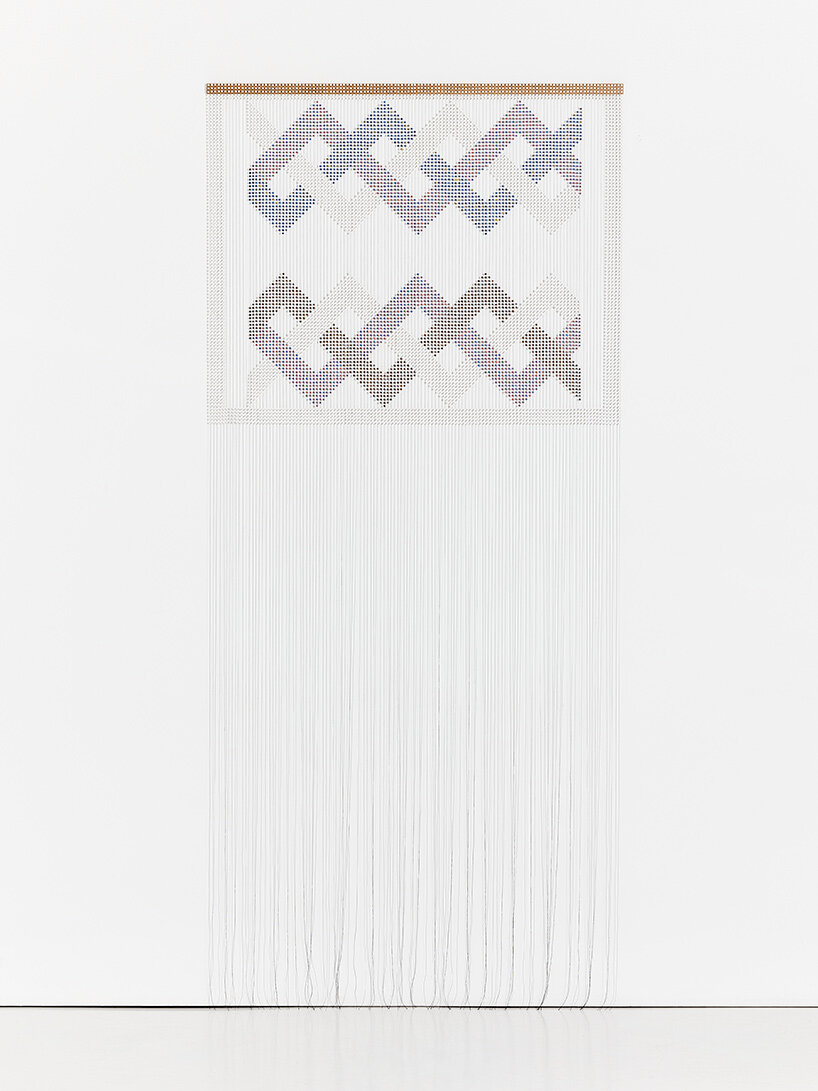 Bonolo Kavula, paradigm shift, 2024, image © Hayden Phipps, Southern Guild
Bonolo Kavula, paradigm shift, 2024, image © Hayden Phipps, Southern Guild
DB: Sanford Biggers’ work, especially from his Chimera and Codex series, is said to play a significant role in this exhibition. How does his use of historical symbols challenge and reinterpret traditional narratives?
LR: Biggers’ iconoclastic, interdisciplinary practice is an artistic approach we are quite familiar with in South Africa. Within our cultural ecosystem, many artists challenge and re-interpret Western modes of representation because these are reductive, defunct, and exclusionary, and have not served African creative expressions. To create anew, one must break down inherited systems and symbols of oppression — this is an act of freedom.
Biggers’ The Cantor speaks to this emergent state of transformation. The ancient Greco-Roman tradition of marble bust statues retains the vestiges of European culture, while the conflation of this symbolism with African masks prompts questions around cultural origins, authenticity, hybridity, and the extraction, dissemination, commodification and consequent dilution of cultures through colonial projects and globalisation. Biggers confronts both the horror and beauty of the double-edged sword of these histories, which is very in line with the ethos of signifying the impossible song.
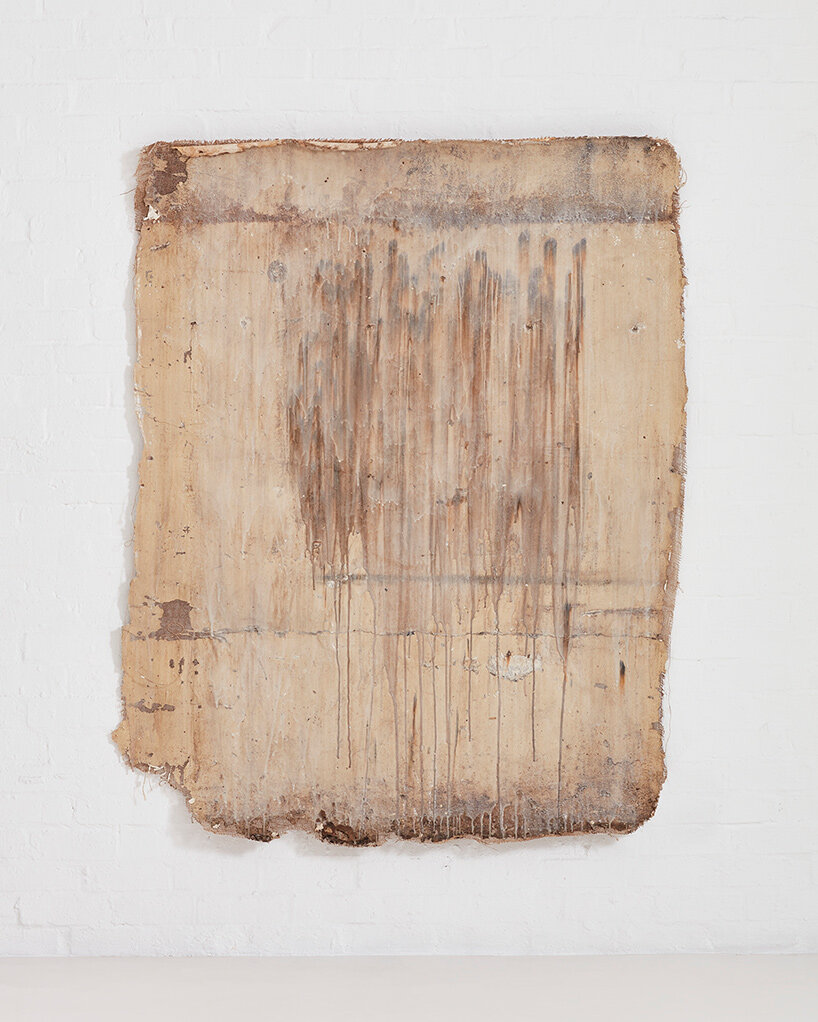
Kamyar Bineshtarigh, Factory Wall.VIII, 2021, image © Hayden Phipps, Southern Guild
DB: Bonolo Kavula’s near-translucent tapestries made from traditional Shweshwe cloth are a focal point. Could you elaborate on how these abstract works embody collective histories and cultural ancestry?
LR: The history of Shweshwe fabric, like most textiles, is a fascinating one. Although distinctly African, the material was introduced to Sesotho King Moshoeshoe by German settlers in the mid-1800s. Originally, the fabric was predominatly blue and white, made with indigo dyes and acid washes. However, this local craftsmanship has been cheapened through mass production and import and export industries. Kavula’s punched Shweshwe disks are an act of preserving this cultural tradition as well as her own ancestry. In her painstakingly mathematical process, circular discs of the fabric are incised and meticulously appliquéd to vertical and horizontal threads — unit by unit. This speaks to a process of archiving, but I’m also interested in the presence of absence within this act of extraction; the holes left behind.
DB: Inga Somdyala’s re-interpretation of South African flags engages with the political history of the country. How does this work comment on the complexities of post-Apartheid South Africa?
JT: Somdyala draws from familiar visual languages to cut through the smoke and mirrors of political drama and assess the material impact the end of Apartheid had on South Africa’s majority population. These two works are flag-like in shape, with each pointing to two very distinct histories. The one work distills the red, white and blue of Dutch and British flags to point to the ‘old order.’ Whilst the other draws from the black, green and yellow of the African National Congress’ flag which manifests the ‘new order.’ Through these works, Somdyala shows us how whilst the political power has changed face, the same power structures are enacted to profiteer off the Black populous.
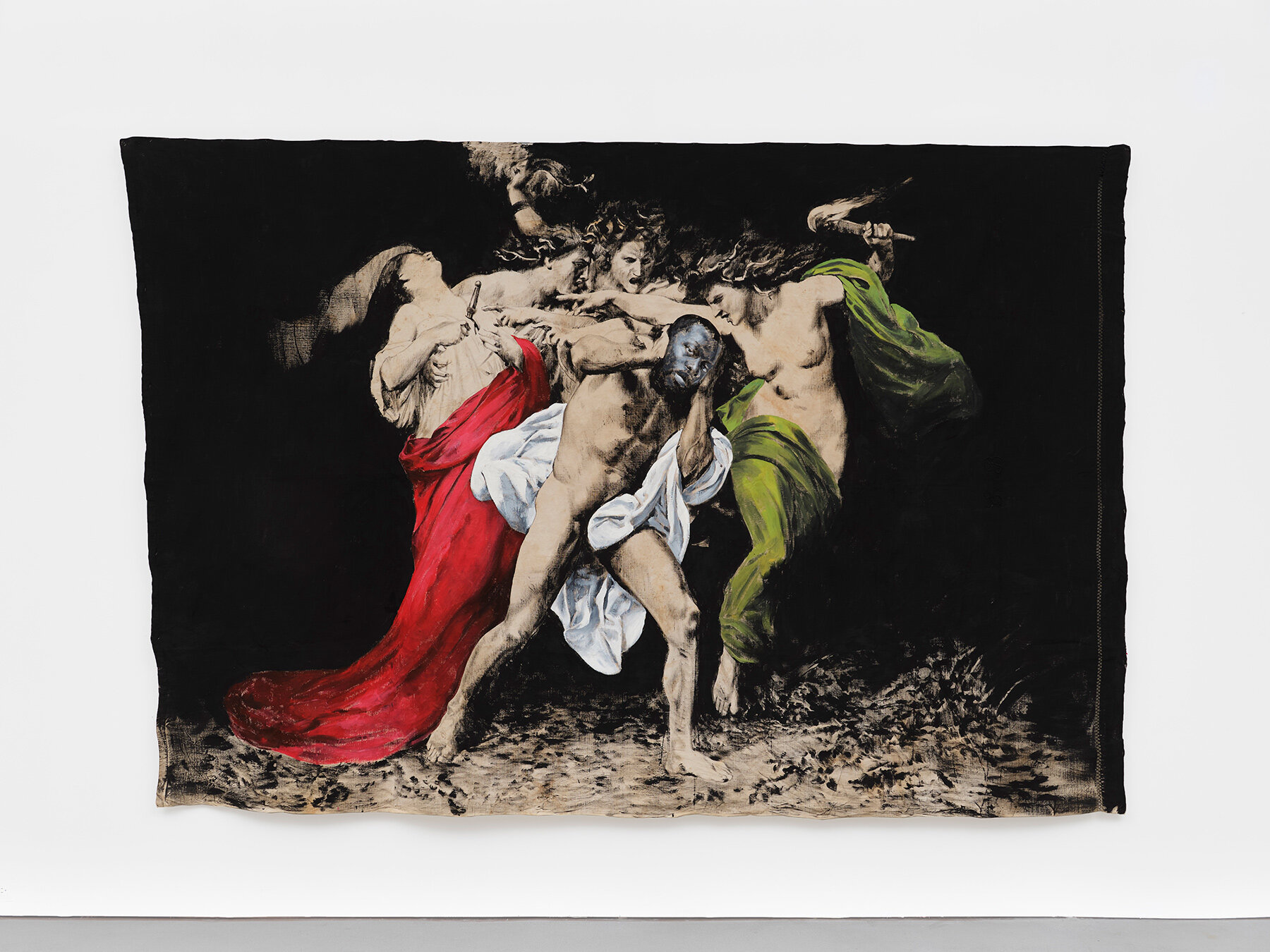
Roméo Mivekannin, Bouguereau (The Myth of Oreste), 2022, image © Julian Calero, Southern Guild
DB: Oluseye’s Hot Commodity series critiques the commercialization of Black culture. What conversations or questions do you hope this series raises about the representation and appropriation of Blackness in contemporary society?
LR: My hope is aligned with that of the artist: to herald the untold and hidden histories of everyday objects. Oluseye works predominantly with ‘diasporic debris,’ a term he coined to describe the found objects collected during his travels across the Atlantic. Black-eyed peas for instance were brought to the Caribbean and Americas by enslaved West Africans; the tiny seeds concealed in the hair of their carriers. The legume became a form of sustenance for those labouring in rice and cotton fields in the South. Cotton plants, also spotlit by Oluseye in this series, holds this human cost. In a conversation with the artist, he made a powerful statement: ‘Some were born with a silver spoon in their mouth, others were born on plantations.’ Oluseye’s approach is often playful, but for me this declaration speaks to a need for greater sensitivities and awareness around privilege, access, protection and remembrance.
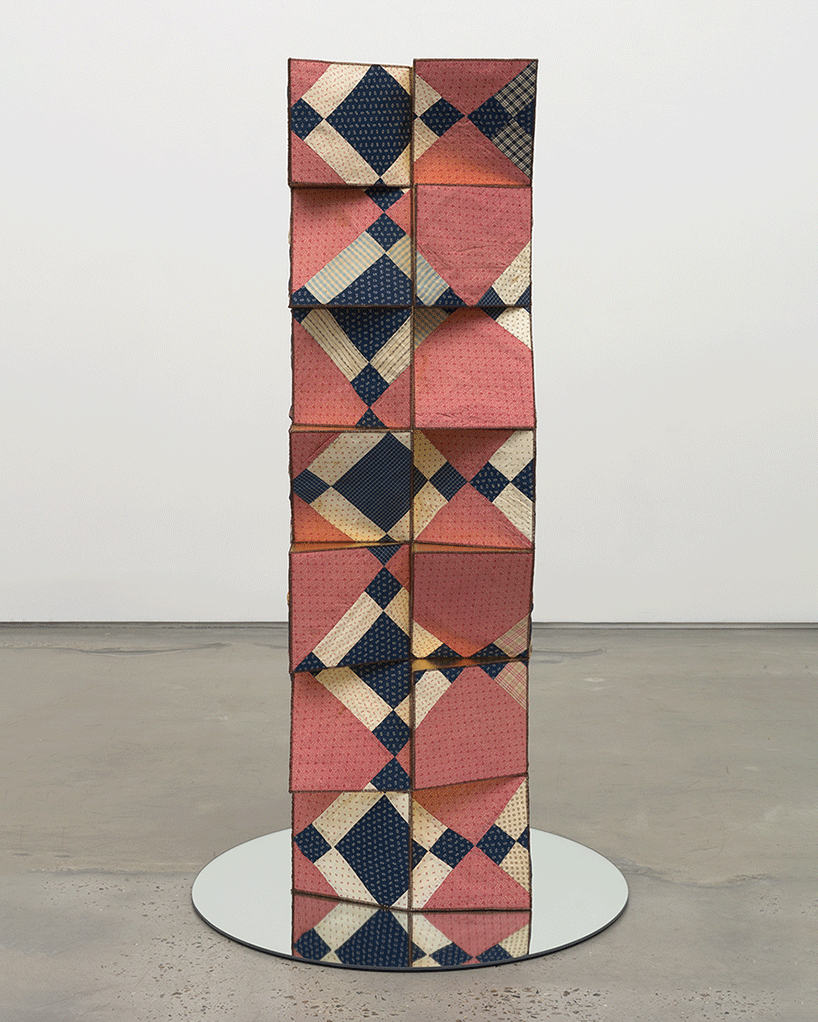
Sanford Biggers, Sugar Sell the Pie, 2023, image © Lance Brewer
DB: Can you elaborate on how the works of Patrick Bongoy, Ange Dakouo, Turiya Magadlela, Usha Seejarim, and Moffat Takadiwa reflect the human need for cultural and spiritual comfort through the materiality of their art?
JT: The through line between these works is their meditative repetition and collectivism: the unit becomes the whole. Seejarim draws on labour practices that have been historically undermined as ‘women’s work’ such as basket weaving, domestic ‘duties,’ and even mothering. She reveres the daily rituals of women. Magadlela stitches together pieces of pantyhose to create a misshapen patchwork quilt. The fabric stretches and rips in parts reflecting the ways women’s bodies are treated as disposable. She obsessively sews the material in a daring attempt to stitch the female spirit back together.
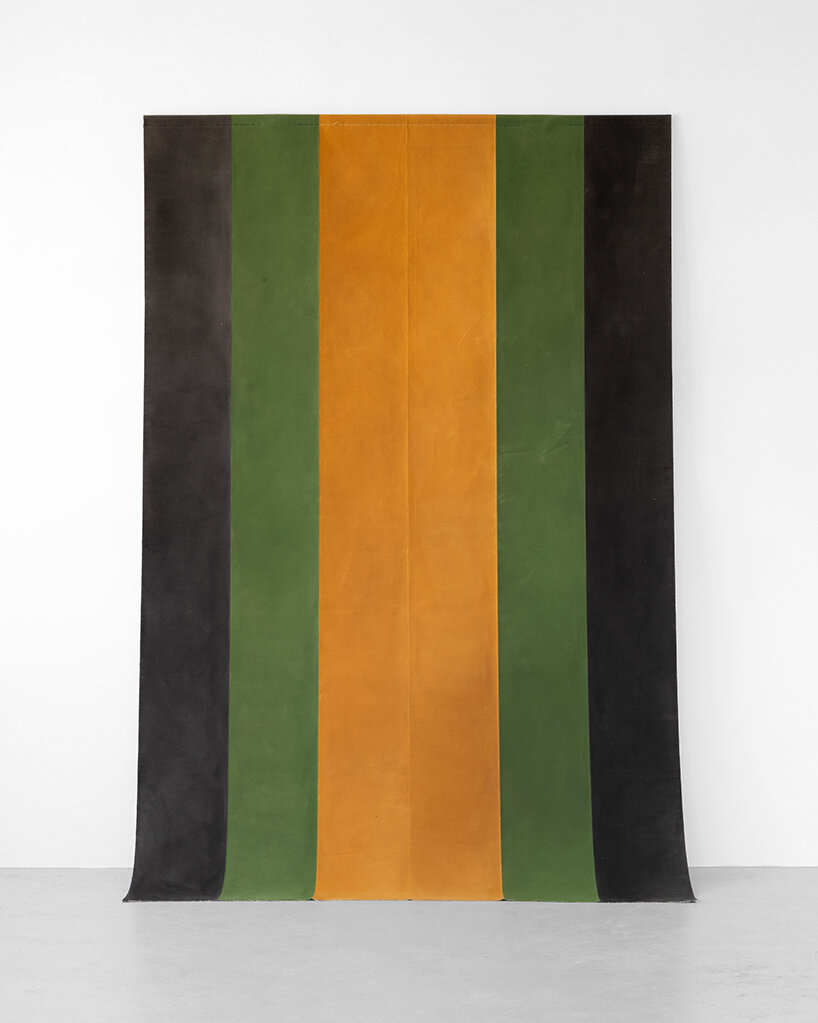
Inga Somdyala, Chronicle of a Death Foretold.V, 2023, image © Inga Somdyala
DB: Can you share any insights into the curatorial process for this exhibition? How did you navigate the challenge of integrating such a diverse range of artistic practices and perspectives into a cohesive show?
JT: We were guided by the central concept and the conversations flowed from there. There was no prescription from our side for artists to work in partilcular materials, rather we were drawn to the subtexts expressed. We looked for artists interested in self-determination and who challenge our pre-conceptions, not only conceptually but materially.
LR: We both see ourselves first and foremost as cultural workers and as facilitators for the stories being told by artists. This means you have to be malleable and more importantly, permeable. The curatorial process was very organic and non-linear, which we believe is more compelling to artists as they become your direct collaborators in meaning formation. We are also grateful for the support of our partner galleries Marianne Boesky, Mariane Ibrahim, Nicodim, Kalashnikovv gallery and WHATIFTHEWORLD.
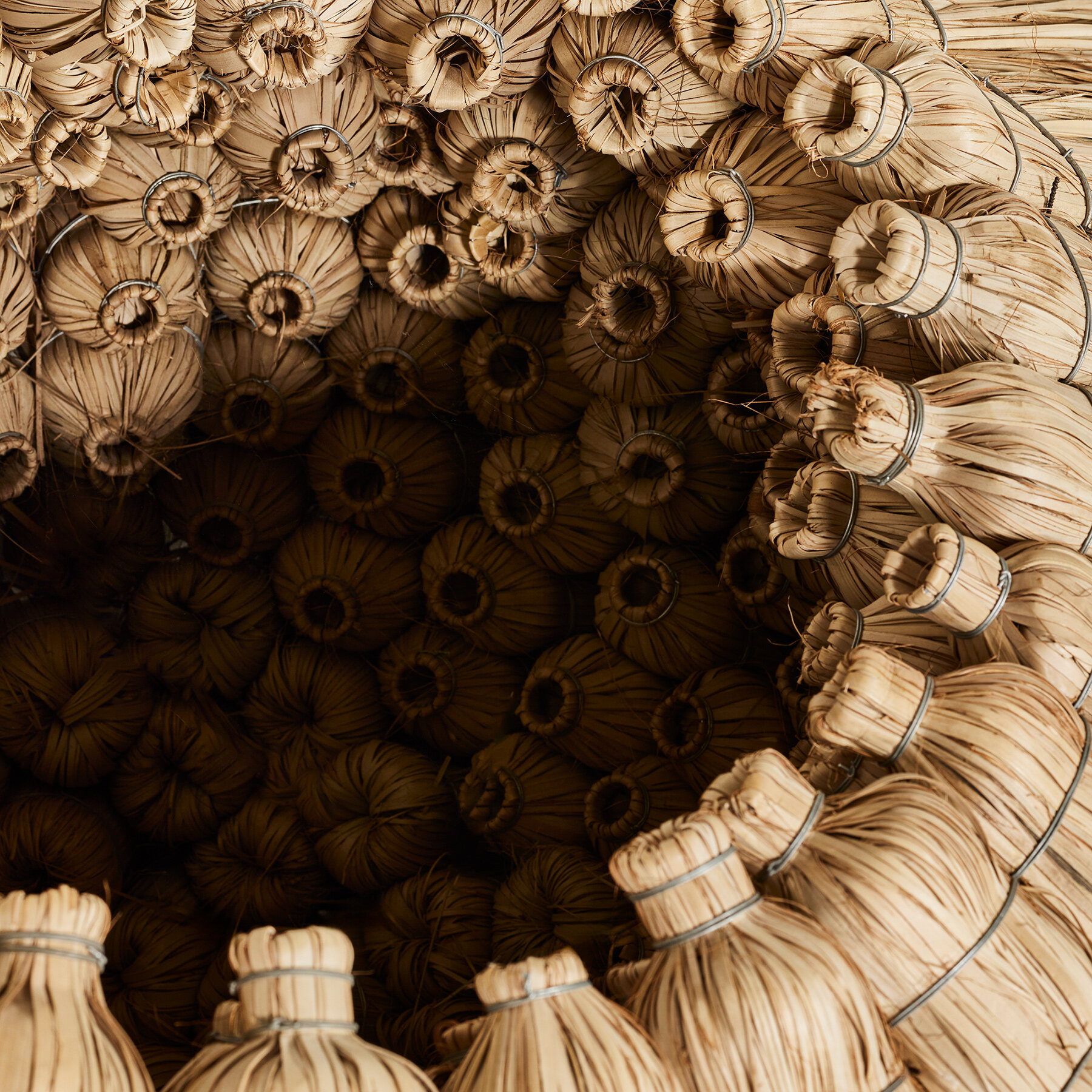
Usha Seejarim, Receptible, 2022, image © Hayden Phipps, Southern Guild
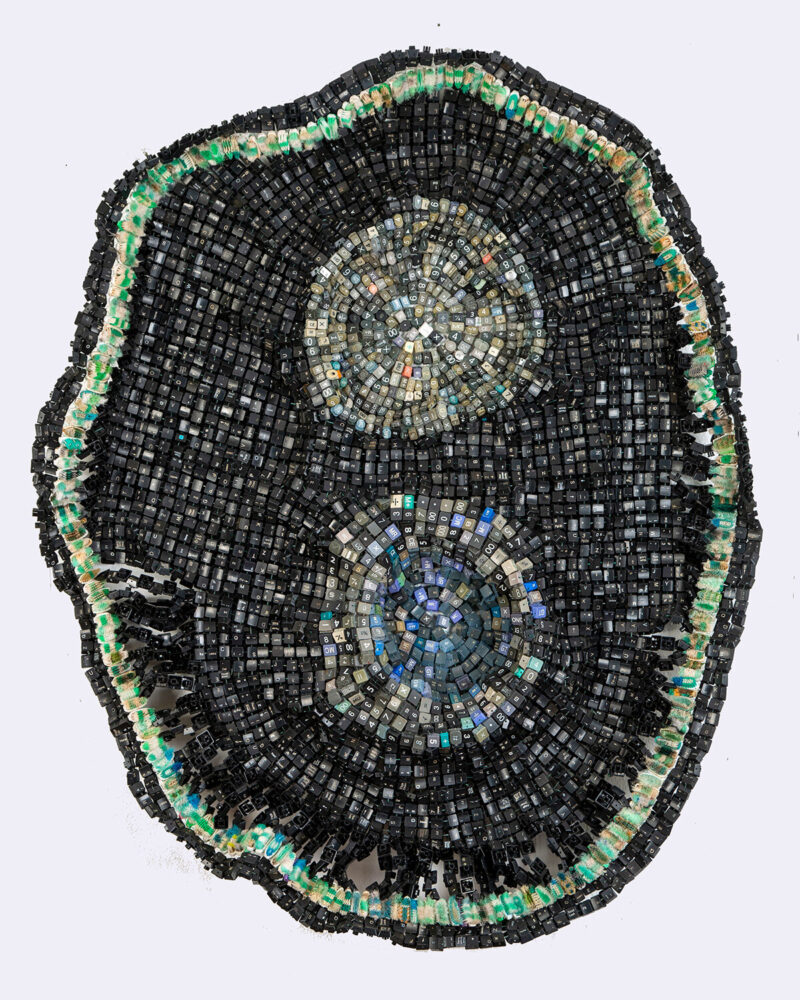
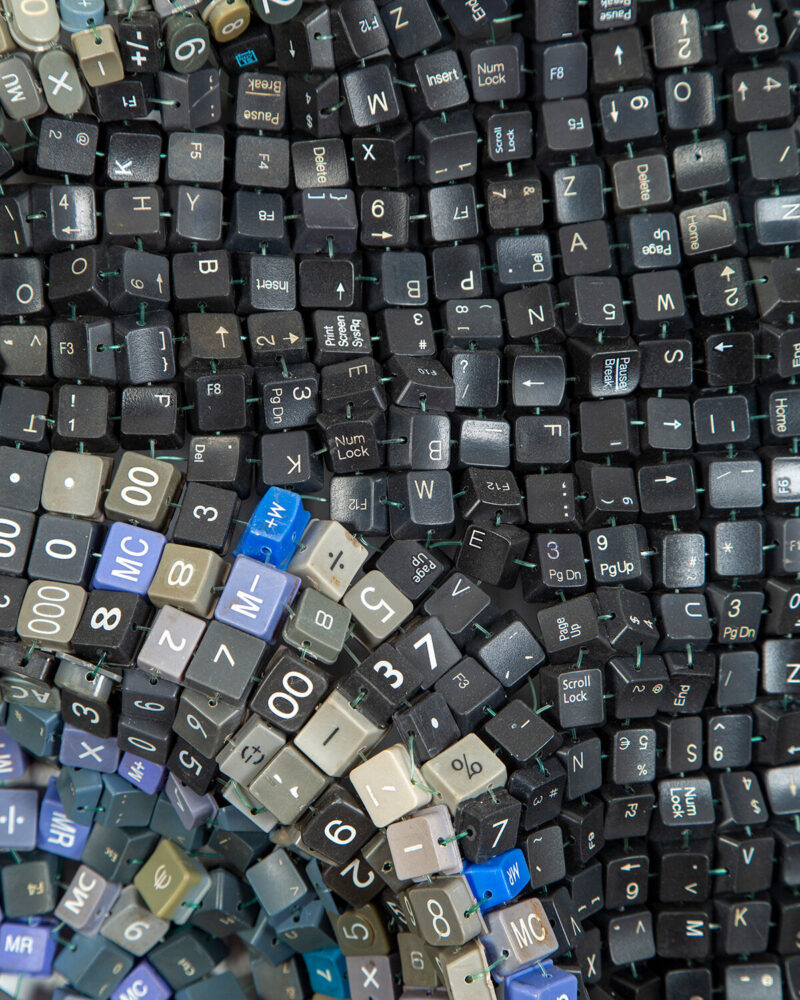
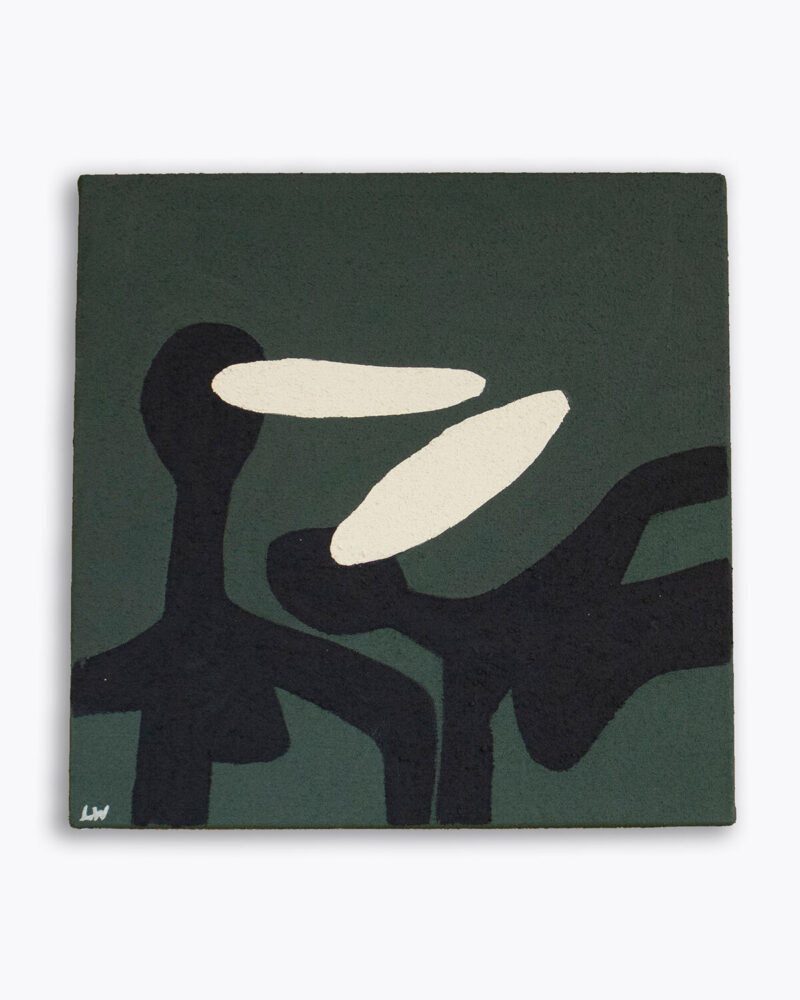
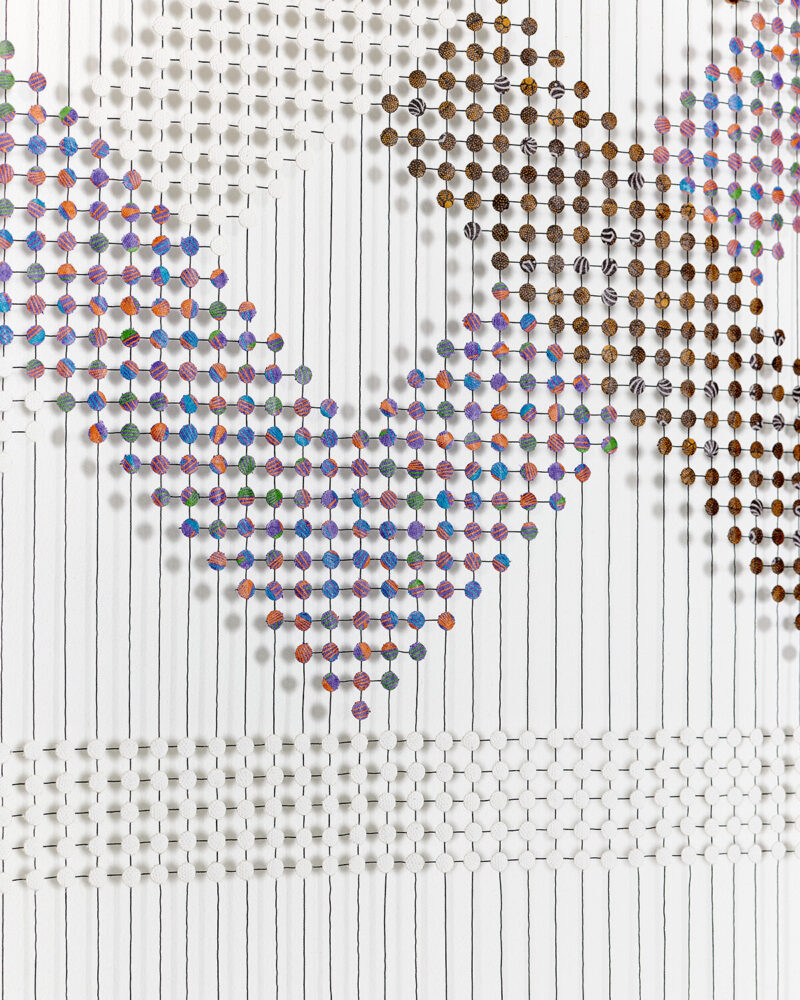
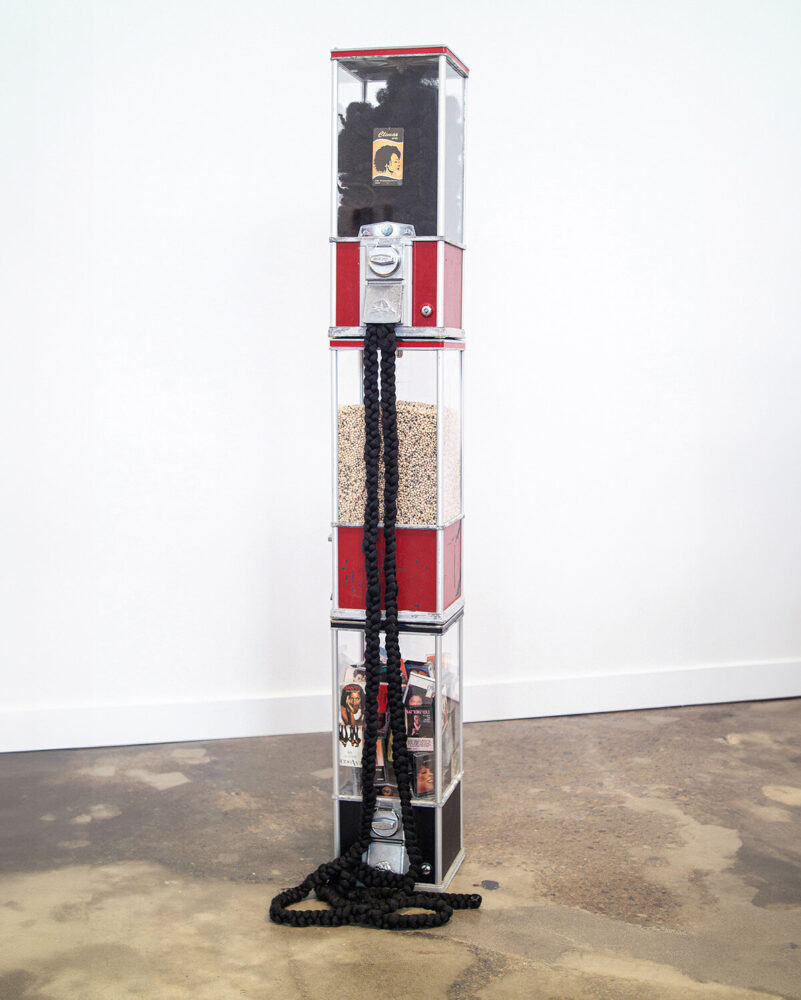
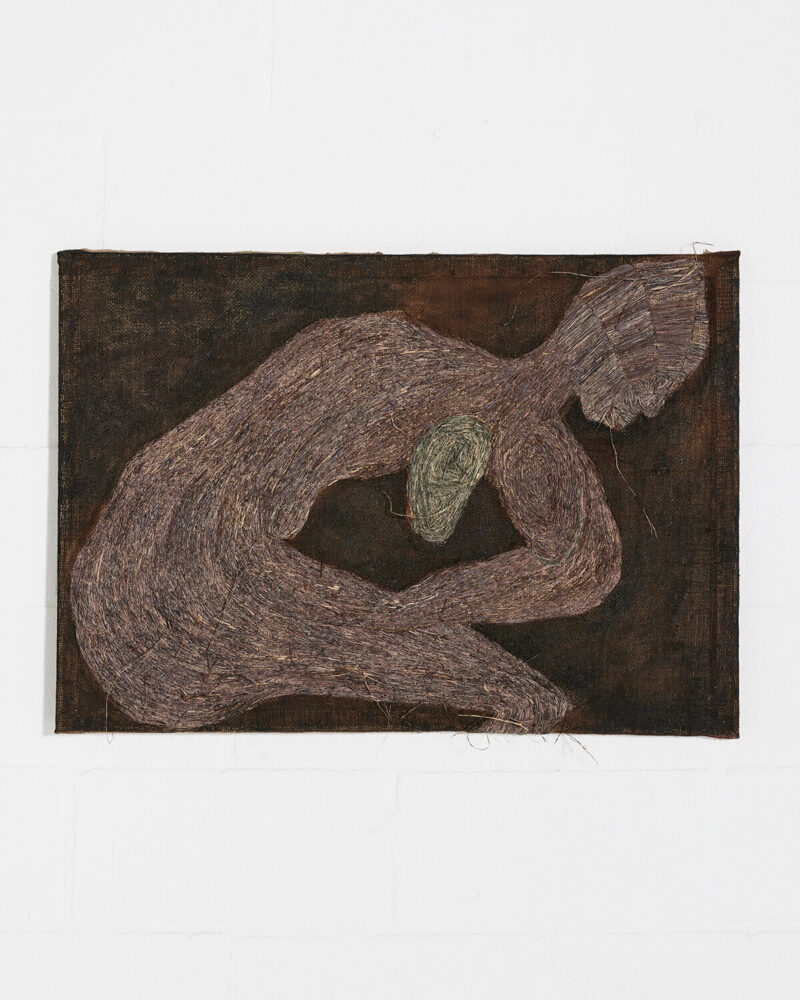
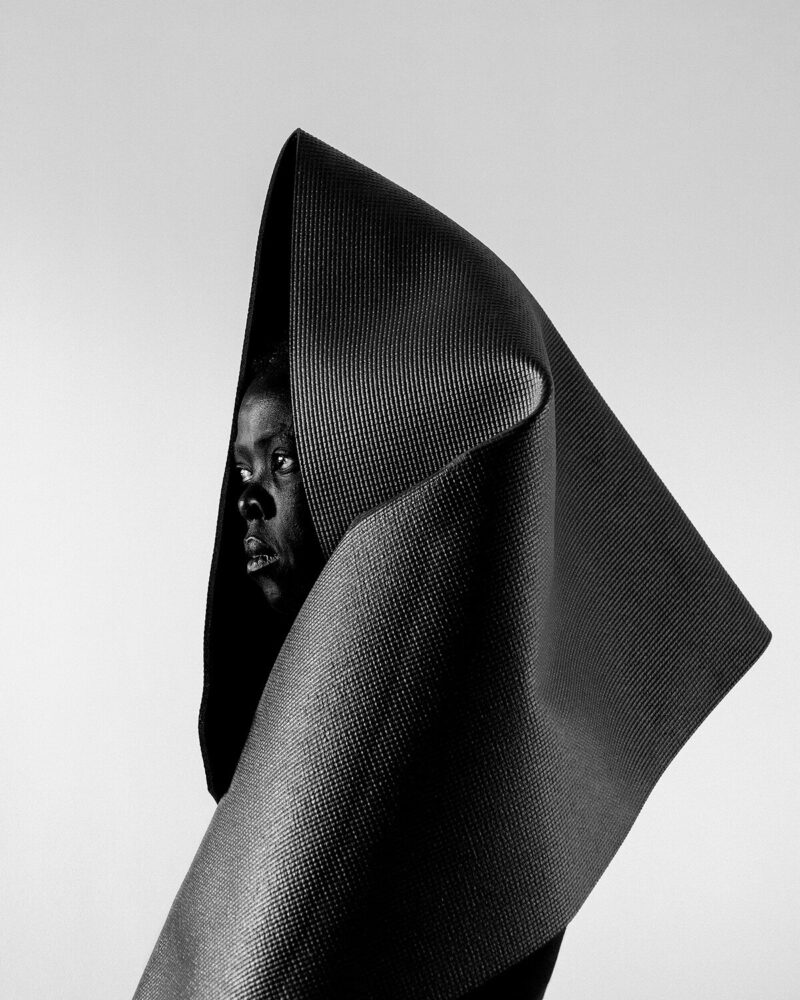
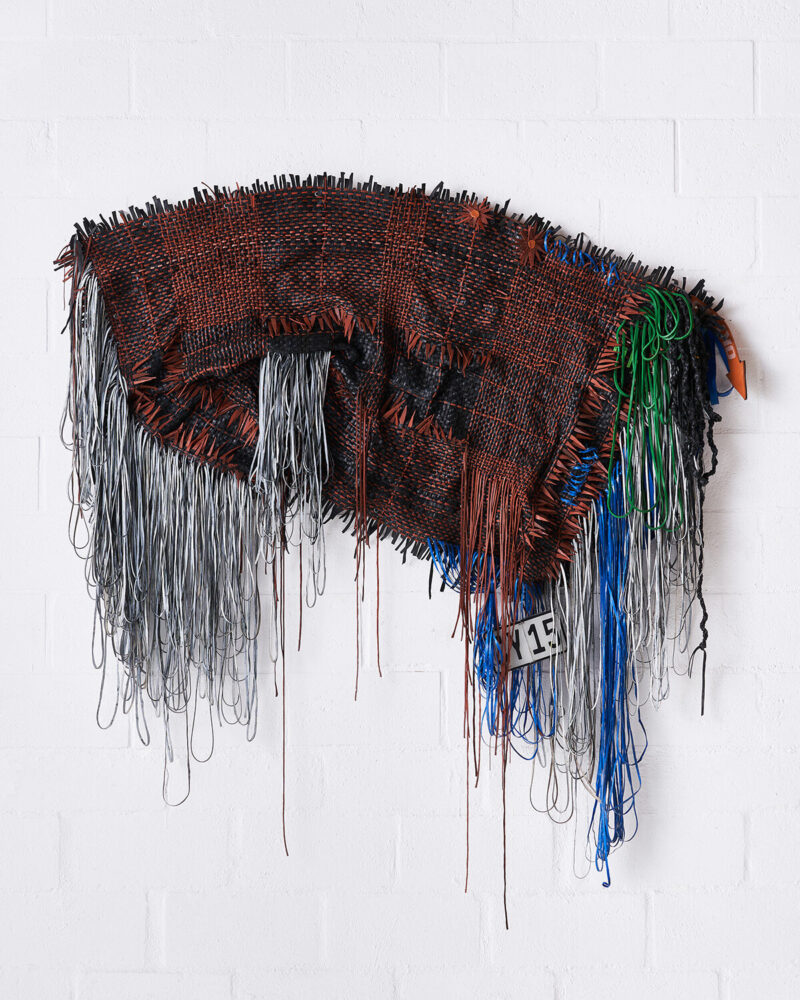
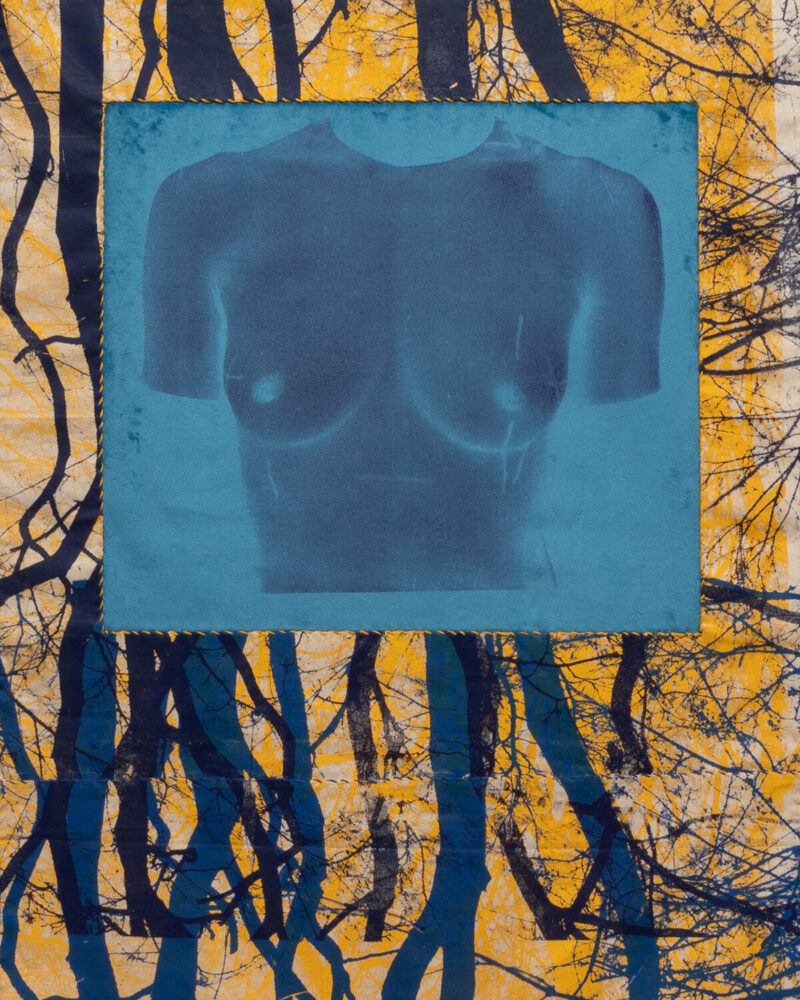
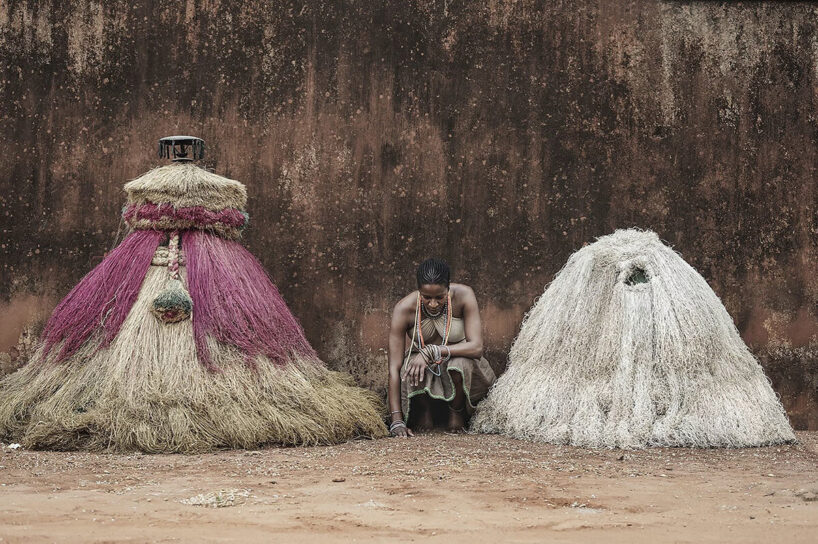
project info:
exhibition title: signifying the impossible song
gallery: Southern Guild Los Angeles
location: 747 N Western Ave, Melrose Hill, Los Angeles, California
curators: Lindsey Raymond, Jana Terblanche
on view: September 13th — November 14th 2024
photography: courtesy Southern Guild
